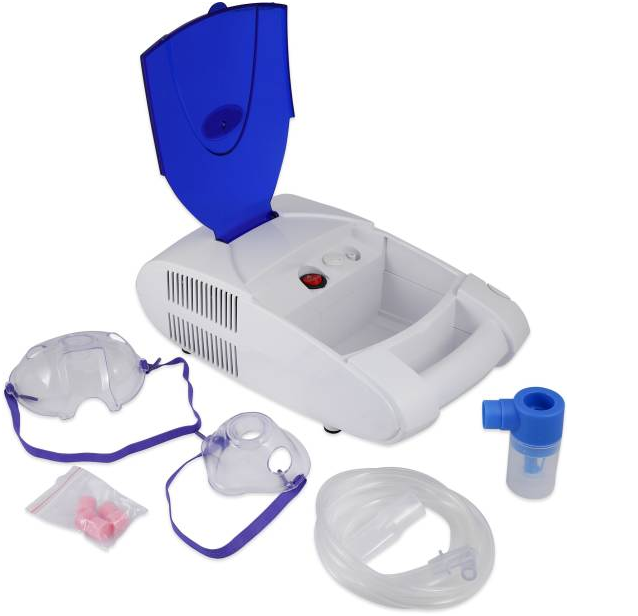If you own a nebulizer, then you should also be aware of some basic cleaning and maintenance techniques that are necessary. With time, dirt settles in the compressor clogs the channels. Similarly, tubing, masks, and mouthpieces also degrade and it becomes an absolute necessity to clean or sometimes even replace some dysfunctional components. Here are some basics that every nebulizer user must be aware of.
- Make sure that you are following the manufacturer’s instructions regarding cleaning your nebulizer, parts, and accessories.
- Even if the nebulizer seems to be working fine, it is not a good idea to use it longer than recommended. A regular child and adult nebulizer masks should not be used for any longer than6 months. They are made with plastic and hence degrade over time, and not only reduce your treatment benefits but may also be harmful if used for too long.
- When you buy a new mask, make sure that it is compatible with your nebulizer.
- You should make sure that you change the nebulizer filter regularly as directed by the manufacturer. Sometimes, it is even better to change it earlier when it turns gray due to impurities.
- Not changing the filter on time is neither good for your health, nor for the life of your nebulizer because an old and dirty will cause your compressor unit to wear out earlier.
- Do not forget to clean the outside of the tubing and replace it whenever needed or as recommended.
- Check and replace any part or accessory appears cracked or worn out.
- Make sure you have some extra tubing, mouthpieces, and masks at home for emergency situations.
Sterilizing Your Nebulizer Parts And Equipment
Keeping your nebulizer system clean increases safety as well as effectiveness of the treatment. It is necessary to clean and maintain it after every use and hence make sure you dedicate some part of your time for that. Sometimes, the nebulizer stops working because the remaining medication in the cup dies out. Making it a habit to follow the manufacturer’s cleaning instructions every time you nebulize will also prevent this.
It is also necessary to sterilize the nebulizer more thoroughly after every week. Below are some tips that may help, however, you these instructions may vary with the kind of manufacturer. Make sure you refer to the instructions as well.
After each treatment:
- Thoroughly wash your hands
- Disassemble the parts from the nebulizer without opening the case.
- Properly rinse the mask and mouthpiece, as well as reservoir tube and T adapter. Use warm water and continue rinsing for at least half a minute.
- NEVER wash the nebulizer tubing or compressor.
- Remove any excess water and leave the parts for some time on a towel to air dry.
- Finally, connect all the parts again and turn on the compressor for a few seconds to dry.
Once a week:
- Refer to the owner’s manual to see if there are any specific instructions given.
- Some nebulizers may require you to soak all nebulizer parts (excluding mask, tubing, and compressor) in a solution of water and distilled white vinegar. Ideally the vinegar and water should be used in the ratio of 1:3.
- Note that this cleaning solution can never be reused.
- Remove any excess water and leave the parts for some time on a towel to air dry.
- Finally, connect all the parts again and turn on the compressor for a few seconds to dry.
- You may also wipe and clean the parts with a soft, damp cloth moistened with water or a mild soap and water solution.
- You can also top-rack dishwasher safe some parts of the nebulizer, but a mask can never be put in a dishwasher.
- After the weekly or daily cleansing, cover the nebulizer and place it in a cool and dry place.

